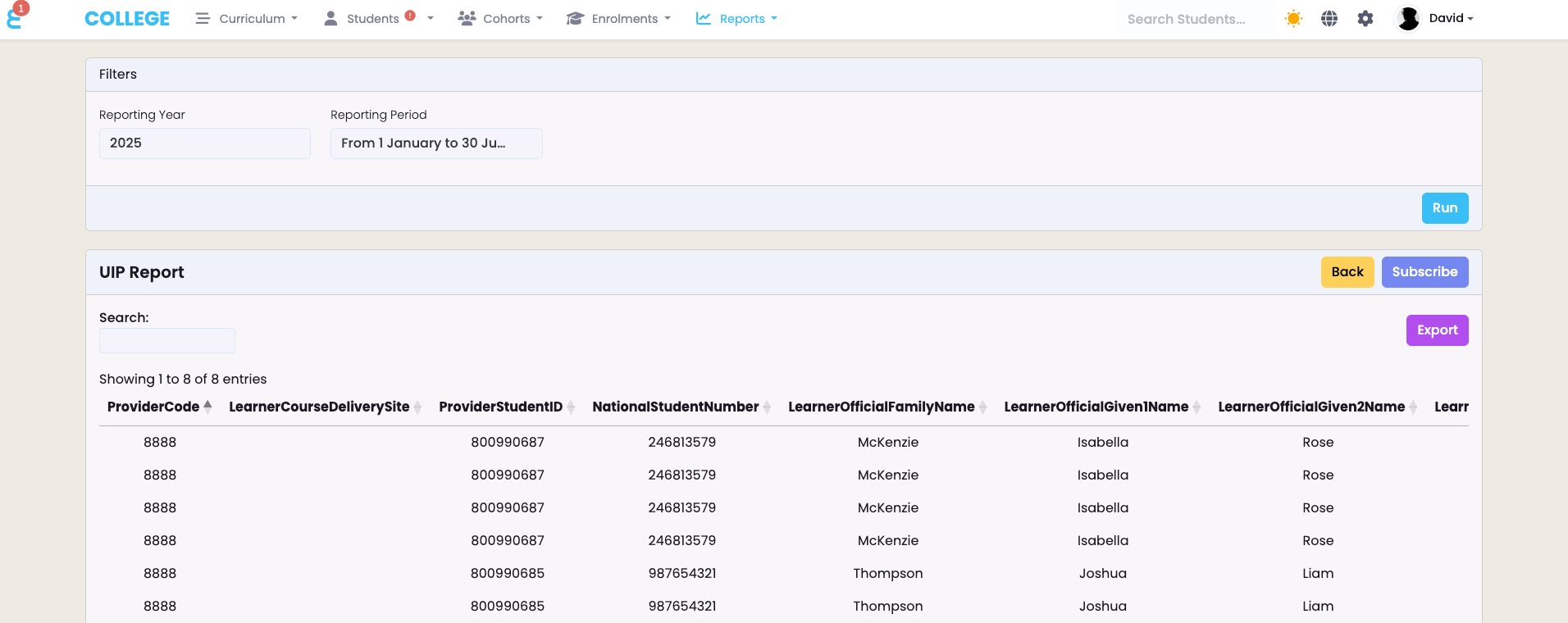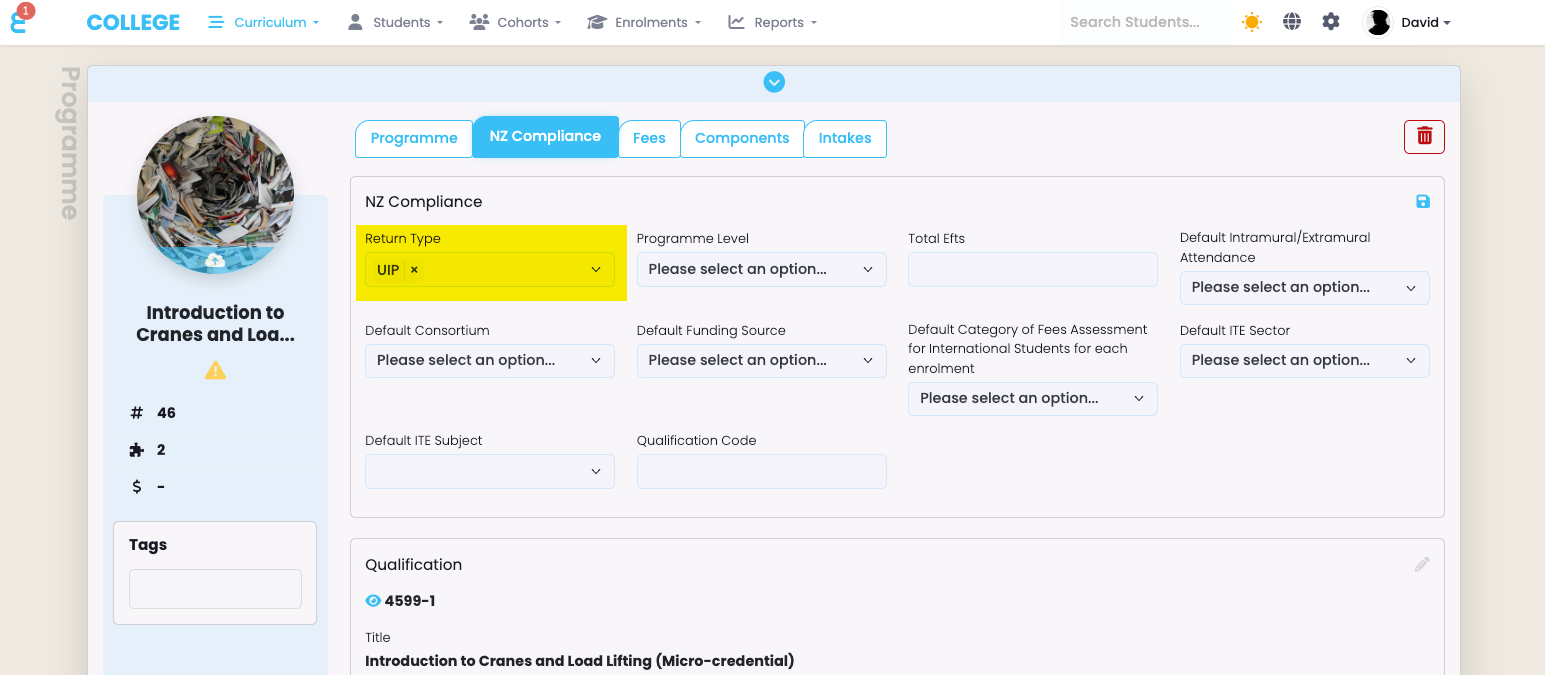UIP (Unfunded International Provider) Data Submission
What is UIP Reporting
UIP Reporting stands for Unfunded International Provider Reporting. It is a mandatory reporting requirement in New Zealand for education providers who enrol international students but do not receive government funding (i.e. not funded by the Tertiary Education Commission, or TEC).
Purpose of UIP Reporting
The New Zealand Ministry of Education requires UIP reporting to:
- Monitor the activity and quality of education provided to international students
- Ensure compliance with the Education (Pastoral Care of Tertiary and International Learners) Code of Practice
- Collect data for policy development, immigration monitoring, and sector planning
Who Must Report?
Any Private Training Establishment (PTE) or education provider that:
- Enrols international students, and
- Does not receive TEC funding for those students must report under the UIP framework.
If you receive TEC funding, you will need to submit an SDR.
What Data Is Included?
UIP submissions include:
- Student personal details (e.g. name, date of birth, gender, NSN)
- Citizenship and visa details
- Enrolment information (programme, start/end dates)
- Delivery site and fee details
- Completion status
Reporting Schedule
UIP (Unfunded International Providers) reporting to the Tertiary Education Commission (TEC) is required:
Twice per year (biannually)
Reporting Periods:
Period 1: For enrolments from 1 January to 30 June
- Due: End of July
Period 2: For enrolments from 1 July to 31 December
- Due: End of January (following year)
These submissions must include all relevant student enrolment and delivery data for international learners not funded by TEC (i.e. full fee-paying students).
Failing to submit accurate and timely UIP data may result in compliance issues or impact your registration status as a Private Training Establishment (PTE).
How Is It Submitted?
Submissions are uploaded to the UIP portal: https://uip.education.govt.nz
The report is generated as a data file in SELMA under Grid reports. Once the report is generated you can download it and subsequently upload it to the UIP portal.
Preparing for UIP Reporting in SELMA
SELMA supports compliant UIP reporting for Unfunded International Providers (UIP) in New Zealand. This guide explains how to ensure your data is correctly structured so that SELMA can generate a valid report for upload to the Ministry of Education’s UIP portal.
1. Enable UIP Compliance in SELMA
To begin, navigate to Curriculum, select the programmes that need to be part of UIP reporting and edit the programme. On the NZ Compliance tab, set the return type to UIP:
Core Data Setup
Students
Ensure all international students have:
- A valid NSN (National Student Number)
- Date of Birth, Gender, and Citizenship entered
- A valid visa type selected (configured in Lookup > Visa Types)
- A valid residency status (Citizenship must be marked as non-NZ)
- A valid ethnicity (from the standard MOE ethnicity list)
All this information is set on the Student Profile in the Student and NZ Compliance tab.
Enrolments
Make sure the programme a student is enrolled to is set for UIP reporting (see above)
Relevant enrolment statuses that are included in UIP reporting are Active, Withdrawn, Complete
An enrolment must contain at least one component enrolment
Delivery Site
Make sure that all relevant campuses have a “Course Delivery Site” set. You will receive the number for your approved delivery sites from TEC.

Navigate to “Settings” (cogwheel icon) -> Campus
Extracting the UIP Report
This guide walks you through how to generate, review, and upload your Unfunded International Provider (UIP) data from SELMA to the New Zealand Ministry of Education’s UIP Portal.
Go to
2. Generate the UIP Export File
Navigate to: Reports > Grid Reports > UIP Report

- Under “Filters”, select the Year and…
-
… the appropriate reporting period:
- Period 1: 1 Jan – 30 Jun (upload due by end of July)
- Period 2: 1 Jul – 31 Dec (upload due by end of January)
- Click “Run”
- SELMA will show the data on the screen with a maximum of 2000 rows in the preview

- Click “Export” to download and save the file to your local computer
Update the File Format
Like every grid report, SELMA generates a csv file. In preparation fo the upload to TEC, you need to change the file format to .txt
Steps:
- Open Excel
- Click File > Open, and select the downloaded UIP report
- After reviewing the data, go to File > Save As
- In the Save as type dropdown, select: “Unicode Text (*.txt)”
- Click Save
Note:
A warning message may appear:
“Some features in your workbook might be lost if you save it as Unicode Text.”
Click “Yes” — this is normal and does not affect your upload to the UIP portal.
4. Upload to the UIP Portal
- Go to: https://uip.education.govt.nz
- Login using your provider credentials
- Select Submit Data
- Upload your SELMA-generated .txt file
- Confirm successful upload or review any error messages shown in the portal
5. Troubleshooting & Re-Submission
If the Ministry portal returns errors:
- Go back to SELMA
- Use the error messages to locate and fix the issue in SELMA
- Re-export the file
- Re-upload via the portal
SELMA Tips
- Always retain a local copy of the uploaded file for audit purposes
- Run the export as close as possible to the submission deadline to ensure data is current
- Contact SELMA support if you require mapping customisations or encounter persistent formatting issues
- Do not submit a UIP report if you already submit SDR reports. If you are a solely international provider, you may opt to submit and SDR voluntarily which will remove the need for UIP reporting.

